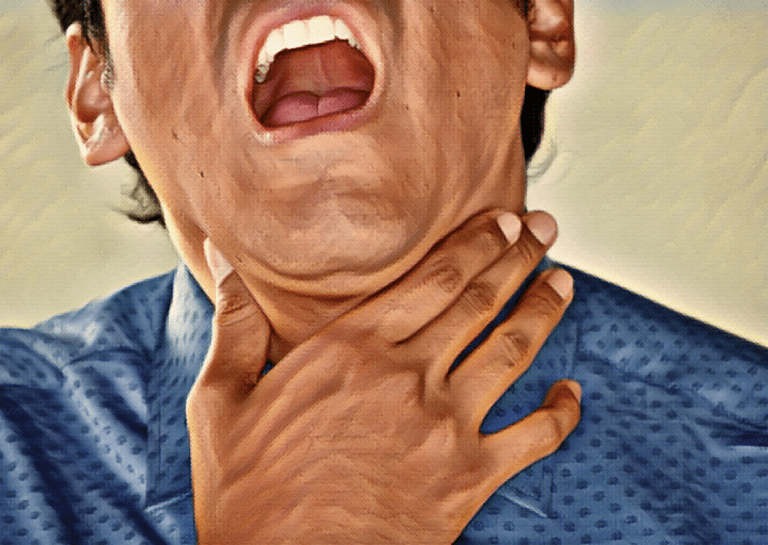Choking is when the airways become obstructed or blocked, usually due to a foreign body getting lodged in the throat. Due to the unique features of pediatric airways, choking is a common occurrence in infants and children of any age and can happen suddenly and unexpectedly.
Because respiratory distress can be fatal, understanding how to act fast when you notice a child choking is paramount to ensuring their safety. This article will help you recognize the signs of choking in children of different ages and instruct you on what to do if it happens.
Causes of choking
Foreign-Body Aspiration (FBA) is the most common type of choking. This is when a foreign object obstructs the airways causing respiratory distress. Toddlers and young children are prone to putting unsafe objects in their mouths, so choking hazards should be kept out of reach and certain foods should not be given to them. Common choking hazards in the home include:
- Large chunks or round pieces of food
- Small objects (e.g. coins, buttons, marbles, magnets, disc-shaped batteries)
- Small toys or pieces
- Pen/marker caps
- Hair clips
- Jewelry (earrings, beads, charms, necklaces, rings)
- Latex balloons — the leading cause of non-food-related airway obstruction in children
Signs a child is choking
The signs and symptoms of choking can differ depending on the child’s age, the type of object causing the obstruction, and the extent of the blockage.
Severe respiratory distress, such as when the airway is completely blocked, is a serious emergency. This can cause bluish discoloration of the skin (cyanosis), altered mental state or confusion, and loss of consciousness.
In most cases, however, children display signs of partial airway obstruction. Common symptoms of partial airway obstruction include:
- Coughing
- Rapid breathing
- Whistling or wheezing sound when inhaling (stridor)
- Gasping
- Inability to speak
- Nasal flaring
- Silent gagging
- Visible distress or panic
- Waving arms or clutching at the throat
What to do
The protocol for dealing with choking depends on the severity of the blockage and the extent of the child’s respiratory distress.
If the child is responsive
- Infants under one-year-old — Deliver five back slaps with the infant in a head-down position, followed by five chest thrusts. Do not administer abdominal thrusts to infants younger than one year old as it can cause damage to the liver which is unprotected at this age. After each round of back slaps and chest thrusts, check to see if the airway has been cleared.
- Children older than one-year-old — Administer five abdominal thrusts (Heimlich maneuver). After each round of abdominal thrusts, check to see if the airway became clear.
If the child is unresponsive
- Call 911 immediately.
- While waiting for paramedics to arrive, perform Cardiopulmonary Resuscitation (CPR).
- Open the airway and check for obstruction.
- Remove any found obstruction, but do not use a blind finger sweep method, i.e. sweeping the finger around the throat to clear objects that are not visible. This can force foreign bodies further down the airway and cause pharyngeal trauma.
Prevention
As mentioned above, toddlers and young children tend to put found objects in their mouths. Preventing choking in children is, therefore, a matter of keeping any potential choking hazards out of reach and out of sight. It also involves avoiding certain foods and snacks that pose a threat due to their size and shape.
Choking prevention extends to general parental vigilance, encouraging proper eating practices in children, and discouraging any potentially dangerous practices.
To prevent choking while eating:
- Prepare their food carefully, ensuring all skins, stems, and seeds are removed.
- Monitor your toddler while they eat and make sure they are sitting upright.
- Never let them eat while walking, running, or lying down.
- Cut up, grate, or purée their food to make it easier to chew and swallow.
- Keep a drink of water on hand to help keep the throat moist and to assist swallowing.
- Avoid giving your toddler foods such as whole grapes, hot dogs, nuts, seeds, popcorn, or marshmallows.
General advice to prevent choking:
- Discourage children from putting objects into their mouth, e.g. using their mouth to hold objects.
- Instruct them not to eat while running or playing.
- Do not allow younger children to have chewing gum and discourage its use in older children.
- Check the age recommendations on toy packaging.
- Supervise young children during meal times.
- Instruct children to chew slowly and thoroughly and to not speak or laugh while eating.
References
- Eren S, Balci AE, Dikici B, Doblan M, Eren MN. Foreign body aspiration in children: experience of 1160 cases. Ann Trop Paediatr. 2003 Mar;23(1):31-7. doi: 10.1179/000349803125002959. PMID: 12648322.
- Mofenson HC, Greensher J. Management of the choking child. Pediatr Clin North Am. 1985 Feb;32(1):183-92. doi: 10.1016/s0031-3955(16)34766-6. PMID: 3975089.
- Topjian AA, Raymond TT, Atkins D, et al. Part 4: Pediatric Basic and Advanced Life Support: 2020 American Heart Association Guidelines for Cardiopulmonary Resuscitation and Emergency Cardiovascular Care. Circulation 2020; 142:S469.
